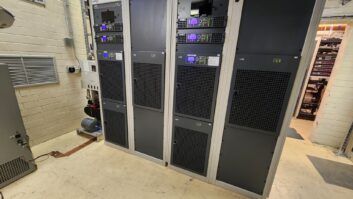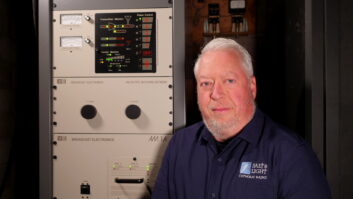A recent Radio World ebook discussed trends in transmitters and best practices when shopping for one.
Mike Cooney is executive vice president of engineering and chief technology officer of Beasley Broadcast Group.
Radio World: When you are shopping for a transmitter or asked for advice, how do you approach it?

Mike Cooney: Today there are at least three good transmitter manufacturers that make reliable products, so we now base our decision on how good their sales support is, what replacement parts costs, and how responsive their customer service is after the sale.
If we already have a manufacturer’s product in a given market, we tend to go with that manufacturer again so there is a familiarity and the opportunity for less spare parts.
RW: If someone hasn’t purchased a broadcast transmitter in some time, what should they know?
Cooney: If you are buying an HD Radio transmitter, you need to consider if a single-box importer/exporter will work in your application or if you need separate hardware for the studio and transmitter site. Not every manufacturer still makes a cost-effective two-box solution, so this should be considered in your decision.
Ninety percent or more of our sites still work better with the importer at the studio and the exporter at the transmitter. While the single-box solutions can be configured as either an importer or an exporter, they have a higher cost.
RW: What would you like transmitter manufacturers to add or make more widely available?
Cooney: I believe the biggest need we have is a more inexpensive option for adding HD in the smaller markets for the broadcaster who can’t currently justify the cost of a new HD system. Embedded exciter/exporters in the transmitters should help lower the cost of HD in the future.
[Visit Radio World’s News and Business Page]
RW: We hear a lot about virtualizing the air chain. What are the implications of this evolution on how transmitters are designed, and how users will choose and configure them?
Cooney: Virtualization could greatly affect our ability to be good broadcasters, who are supposed to serve the public interest of their local markets.
The day is coming very soon where you will not need a studio in the local market, and I don’t see how this can be good for the radio industry or the public interest. That being said, it will obviously save the broadcaster a lot of money if they don’t need a studio.
As far as the technology, we need to make transmitters and especially HD technology more plug-and-play so the local engineer / IT person can safely configure and maintain the site. It is still not as easy as it should be to configure a transmitter site for HD, RDS, Artist Experience and PAD, but it is getting easier each year.
RW: Hybrid radio platforms that combine over-the-air broadcast reception with online connectivity are becoming part of the landscape thanks to the work of organizations like RadioDNS, NAB PILOT and Xperi, as well as competition from the likes of SiriusXM 360L. What are the implications for the world of transmitters?
Cooney: I believe all the big transmitter manufacturers support Xperi’s DTS AutoStage and the other car manufacturers’ hybrid radio solutions, but you also need to use a service such as QUU or Artic Palm to get the full experience in the car.
The radio industry has done a poor job of giving the listener a consistent visual experience, and we still have stations without even RDS, let alone HD and PAD data. Satellite radio and the streaming services have a better visual experience than over-the-air radio, and as an industry we need to support these services to compete.












